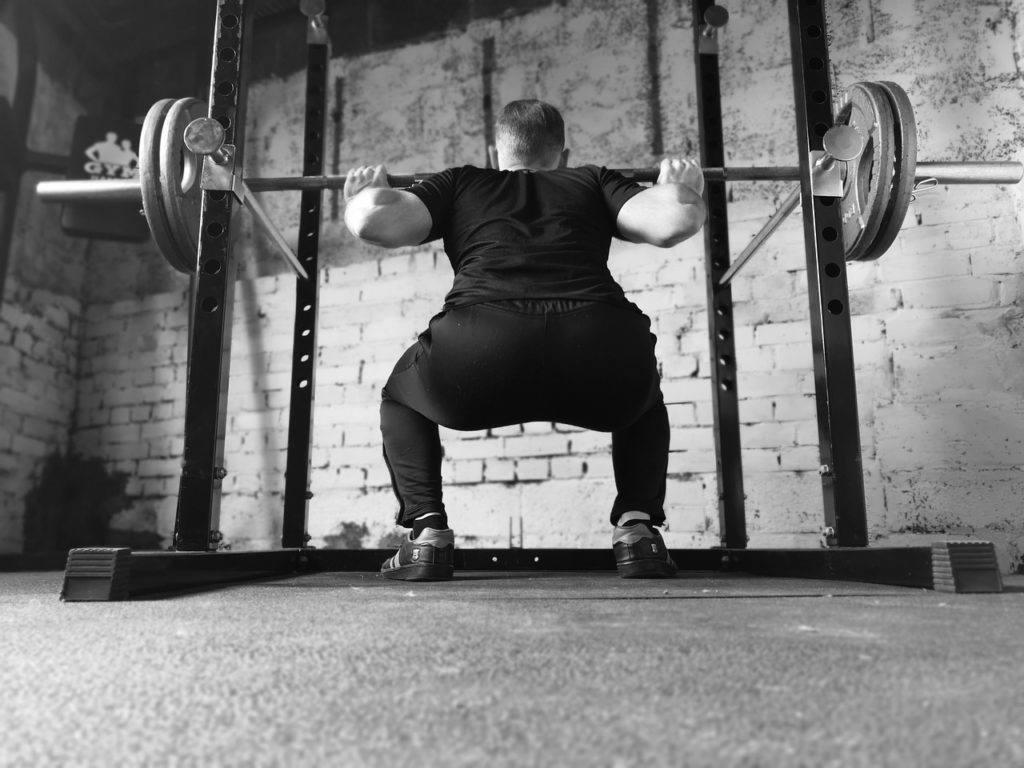If you’re wondering whether running counts as leg day, then you’ve come to the right place.
In this article, we cover whether running counts as leg day, whether you should train legs if you’re a runner, the best type of running to build your legs, and more!
Does Running Count As Leg Day?
Although running provides many of the same benefits as training legs, running won’t build your leg muscles as much as leg day. So, you should still train your legs if you want to develop your leg muscles.

Why Running Can Replace Leg Day
Running Targets Your Lower Abs
There are 2 main factors when it comes to building a six pack:
- Low body fat
- Developed abdominal muscles
Interestingly, leg day helps you get abs by working on both these factors.
It helps you develop your abs by training them with compound exercises like squats.
And it helps you lose body fat by burning a ton of calories.
Similarly, running can also help build abs.
Not only does it burn loads of calories, but it works out your lower abdominal muscles too.
So if you do leg day because you want some eye catching abs, then running is a great alternative.
Running Burns A Lot Of Calories
The legs are the largest muscle group of the body.
So when you train your legs, you use up more energy (i.e. burn more calories) than if you were training a smaller muscle group, such as arms.
Also, many leg exercises, like lunges, train other muscles such as your abs and butt.
And so one of biggest benefits of leg day is that it burns lots of calories.
Well, likewise, running is an awesome way to burn calories.
Because like leg day, it works both the biggest muscle group and other muscles too!
(According to veryfitwell, an average-sized runner will burn around 100 calories per mile.)
So if you train your legs to burn lots of calories, then running is an excellent alternative.
Running Is Great For Cardio
Leg day is an epic form of cardio.
Why?
Well, by definition, cardio is any type of exercise that works the heart muscles.
And if you’ve ever trained legs properly, you’ll know just how much your heart jumps out your chest after an intense set of squats.
Likewise, running is another great form of cardio as it increases your heart rate.
So if you do leg day to improve your cardio fitness, then feel free to run instead.
Why Running Can’t Replace Leg Day
Running Is Minimal Resistance
One negative of running is that the resistance on your leg muscles is limited.
You only have your bodyweight and gravity to push against.
Whereas when training your legs, you can easily add more weight.
Since progressive overload (i.e. increasing resistance over time) is key to building bigger and stronger legs, you’re limited to how much gains you can achieve solely from running.
Running Is Repetitive
One benefit of leg day is that it works your leg muscles from various angles.
For example, lunges work your quads differently to leg extensions, which work your quads differently to squats.
This means that you’re working as many muscle fibres as possible, which helps develop and build your leg muscles.
Whereas when you run, you’re repeating the same motion over and over again.
As a result, you’re training less muscle fibres, which limits the growth of your leg muscles.
Can You Skip Leg Day If You Run?

If you want to grow your leg muscles and build a more balanced body, then I’d recommend you still train legs if you run.
Whereas if a balanced physique and large leg muscles don’t appeal to you, then it is ok to skip leg day.
(But please keep in mind that an unbalanced physique can make you more susceptible to injury.)
Is It Best To Replace Leg Day With Jogging Or Sprinting?
Well, this depends on what your goals are.
If you’re wanting to make your legs as muscular as possible without doing leg day, then sprinting is superior.
Whereas if you’re wanting to improve your cardio fitness, then jogging over a long distance is better.
Another thing to consider is which do you enjoy more…
A wise person once said:
The best workout is the one that you complete.
In other words, you should do what you enjoy, so that you actually stick to it and achieve the benefits, rather than putting it off.
Can You Run After Leg Day?
If you have the energy, then running after leg day can be beneficial.
Since running increases blood flow to your legs, your leg muscles will receive the nutrients they need to grow and repair.
This will help reduce muscle soreness the next day.
After your next leg session, add a 15 minute light jog to the end.
Your leg muscles will thank you the next day!
Running Legs vs Lifting Legs
There is a difference between the leg muscles of those who run and those who resistance train.
This is because the leg muscles are worked in different ways at different intensities.
Running Legs
Running will help tone your legs and make them stronger, however, they won’t be as developed.
Most runners have a small physique since running help reduces body fat (including from your legs).
Lifting Legs
Those who train their legs in the gym will typically have bigger leg muscles than runners.
This is caused by microtears in the muscle fibres from resistance stress, which are repaired and increased in size and numbers to give you bigger muscles.
Benefits Of Training Your Legs
While most people do leg day to build there leg muscles, there are actually numerous benefits to leg training.
Let’s take a look at some of these benefits in more detail.
Improved Heart Health
While most people do leg workouts to improve their physique, they offer many other benefits too.
For example, resistance training has been linked to lower risk of heart disease and improved cardiovascular health.
It’s worth noting though that for some people, there’s no additional benefit from training more than 4 times a week.
Improved Joint Health
Some people that intense workouts, like leg day, can worsen your joint health.
But nothing could be further from the truth.
When building your leg muscles from frequent leg sessions, your leg muscles get bigger and stronger, which helps support your joints.
If you experience joint pain during exercise, it’s worth checking your technique as poor technique is often the cause.
If you’re certain that your technique is correct, then you should consult your medical professional who will advice the best course of action.
Lower Cholesterol
With so many adults having high cholesterol levels, it’s important to know easy ways to reduce these to safer levels.
So, you’ll be delighted to know that training your legs every day can positively impact your total and LDL cholesterol.
Generally, the more intense the exercise, the better it is at improving your cholesterol balance, which is why leg workouts are so good.
Improved Balance
There are many different factors which maintain your balance.
If you’re trying to improve your balance, then exercises which work one body part at a time (i.e. pistol squats) can do a great job.
These can be quite hard to master though, so practise them and stay patient.
The more you practise, the better you’ll get at them, which is why training legs every day is so beneficial.
Improved Circulation
While improved circulation is typically associated with cardio exercise, weight training can provide many benefits too.
In one study, resistance training provided greater blood flow to the limbs than aerobic training.
If you’re wanting to improve leg circulation, isolation exercises like leg curls and leg extensions make a great choice.
Improved Sleep Quality
One of the lesser known benefits of regular weight training is improved sleep quality.
In a recent study, the participants reported improved sleep quality after doing resistance exercises.
However, the study was limited as the results were reported by the participants (rather than measured using metrics of sleep quality).
Improved Brain Health
Regularly working out your legs can help improve brain health and reduce the risk of neurodegenerative diseases.
In one study, subjects at risk of developing Alzheimer’s disease who strength trained for 6 months had additional protection of the hippocampus.
(Which is an area of the brain involved in learning an memory.)
Conclusion: Is Running Enough For Legs?
In summary:
- While running can provide many of the same benefits as leg day, running does not count as leg day.
- Runners typically have smaller legs than people who do leg day.
- Leg day provides many additional health benefits than just having big leg muscles.
That’s all for this article, but why is leg day so hard? Or can cycling replace leg day?
Hope this helped!
I’ve been in the fitness and strength training industry for nearly a decade. In that time, I’ve gained 30 pounds of muscle, written hundreds of articles, and reviewed dozens of fitness supplements. As for my educational background, I’m a currently studying for my Active IQ Level 3 Diploma in Personal Training.

